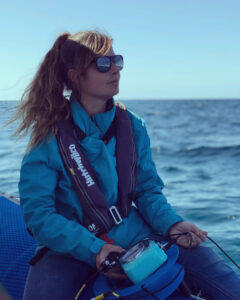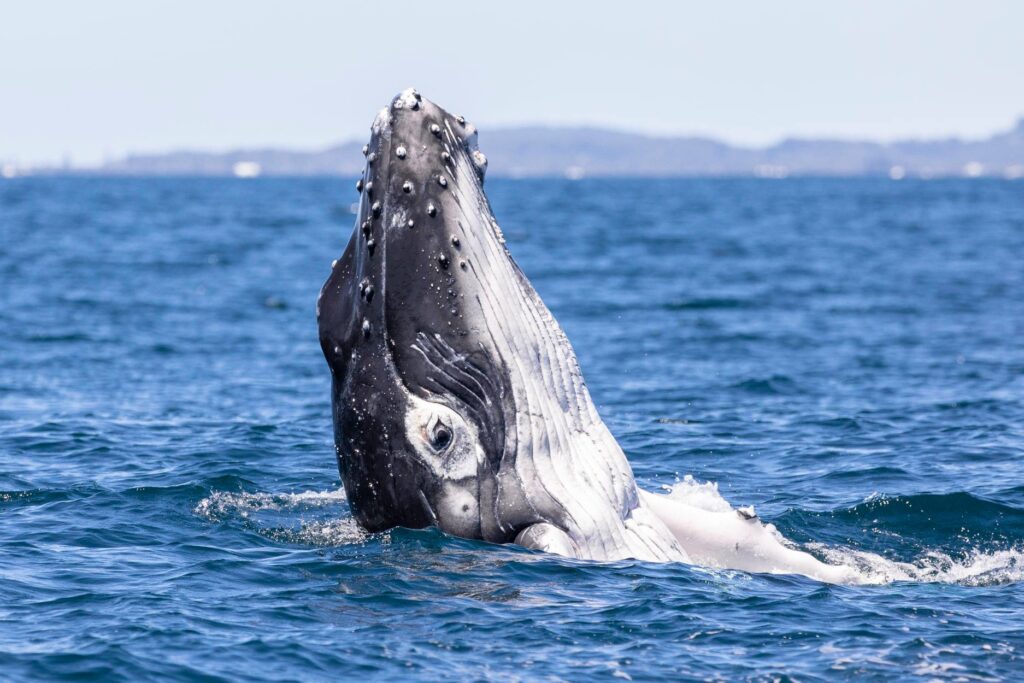Humpback Whales are known as ‘the acrobats of the ocean’ due to their impressive range of behaviours.
Here you can find the most common behaviours which can be observed during our whale watching tours.
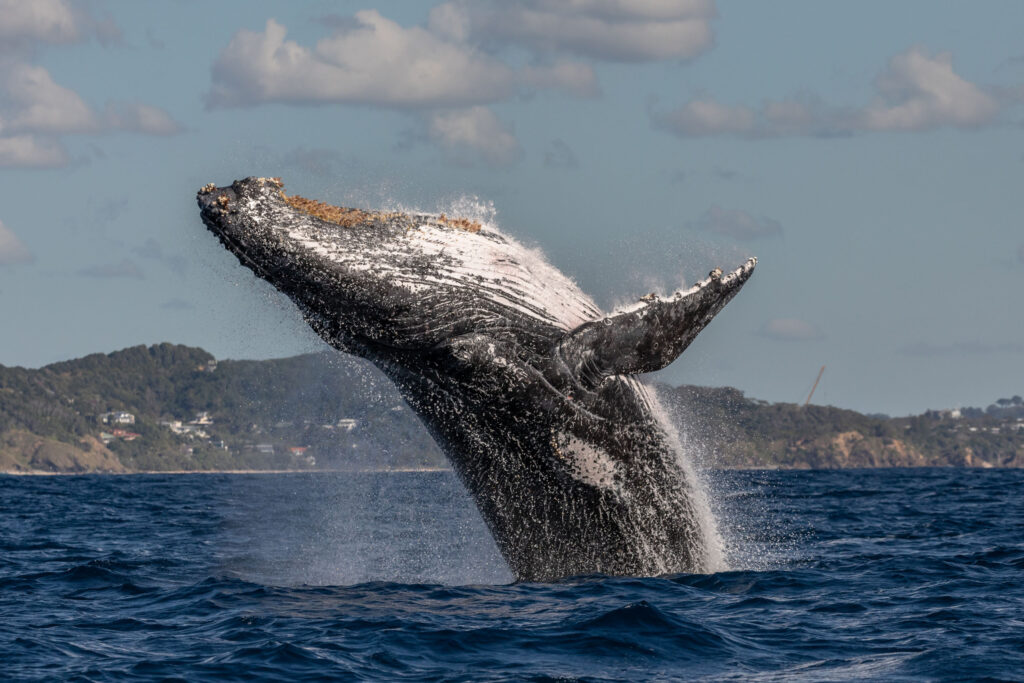
Breach
One of the most spectacular behaviours to observe! With just a few strokes of their flukes, humpbacks can propel their bodies out of the water, then crash back down with a thunderous splash! They can breach for many reasons, from communication to removal of parasites to joyful play.
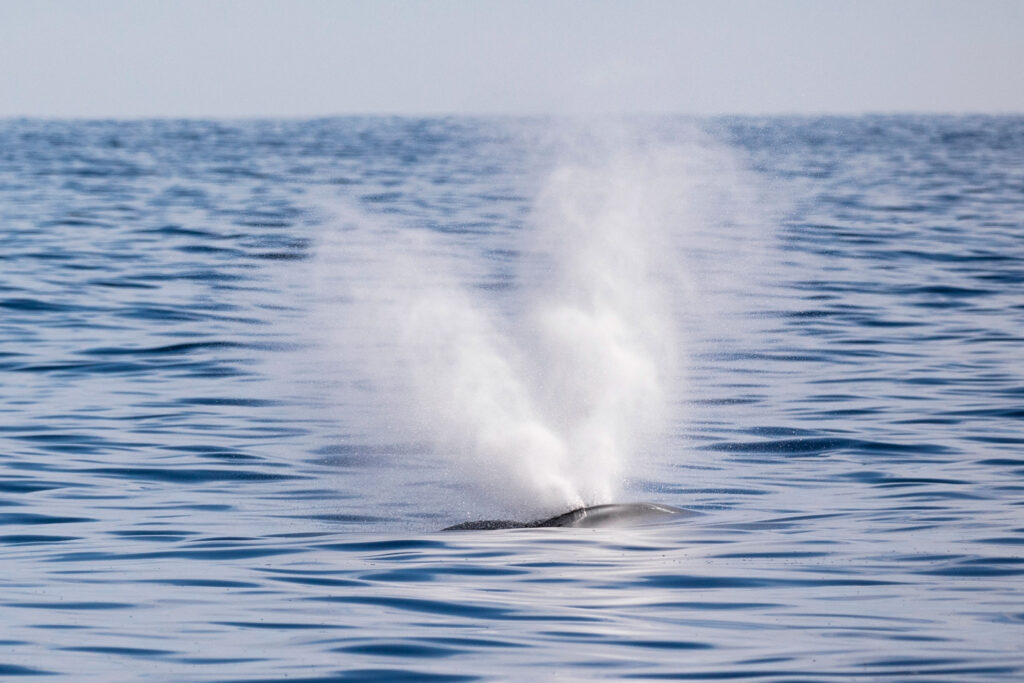
Blow
Whales are mammals, just like us. Their most common surface activity is coming to the surface to breathe. Their exhalation forms a cloud of moist air that can be seen from many kilometres away.
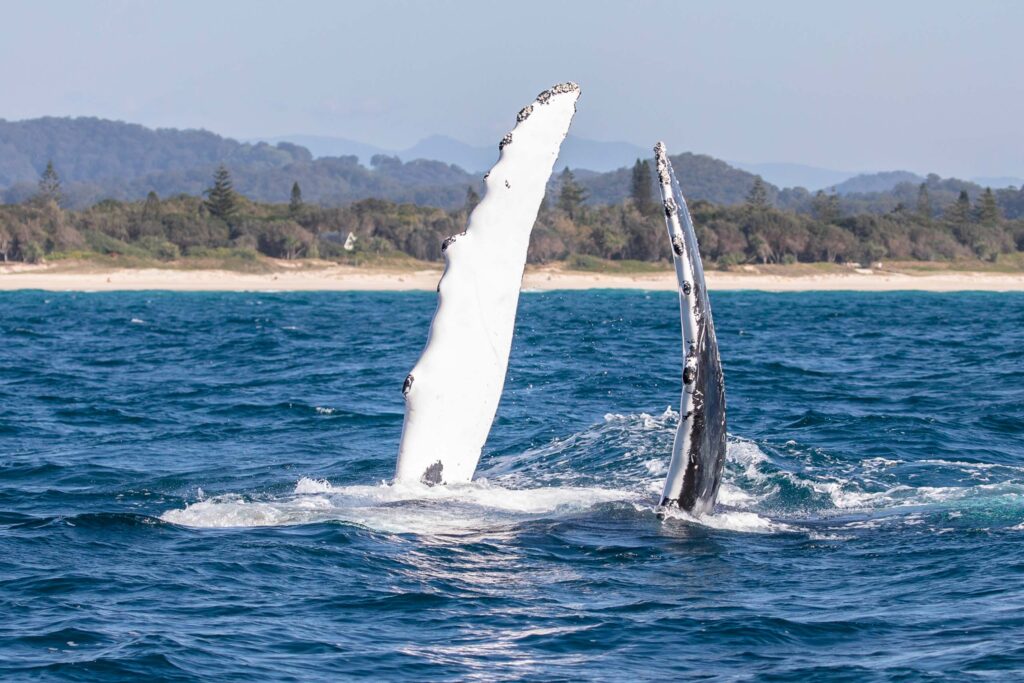
Pectoral fin Slapping
Humpbacks have the longest pectoral fins of all whales, up to 1/3 of their body length. They will often roll onto their side or back, raise one or both pectoral fins clear of the water and slaps them forcefully on the water surface.
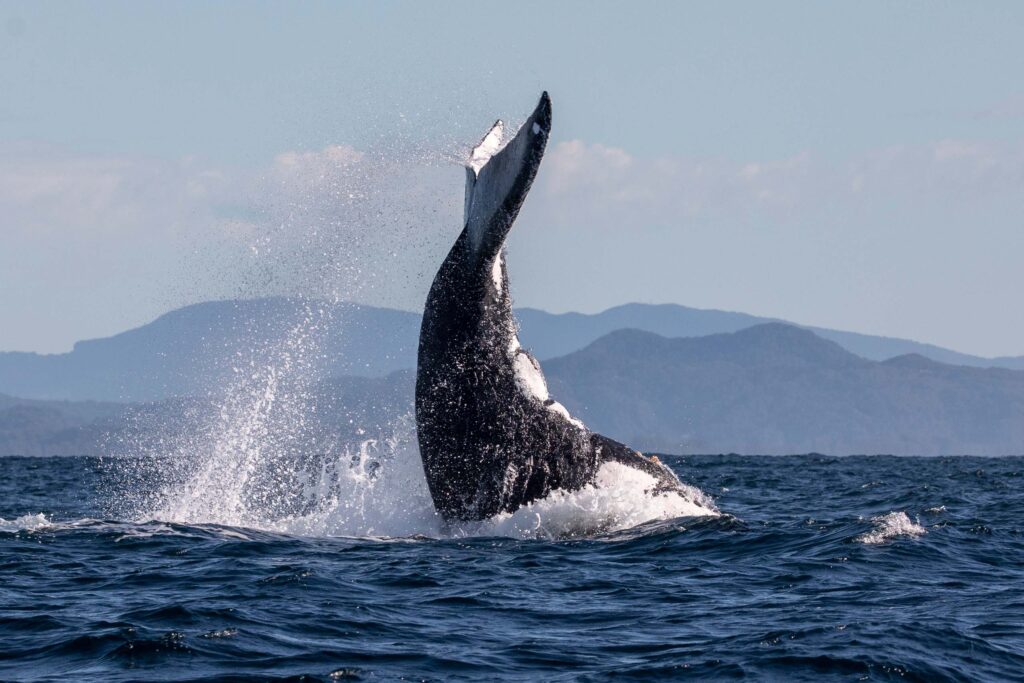
Tail Slapping
Humpback whales will sit vertically in the water while slapping their flukes against the surface. Whales have been seen tail slapping repeatedly, more than 40 times!
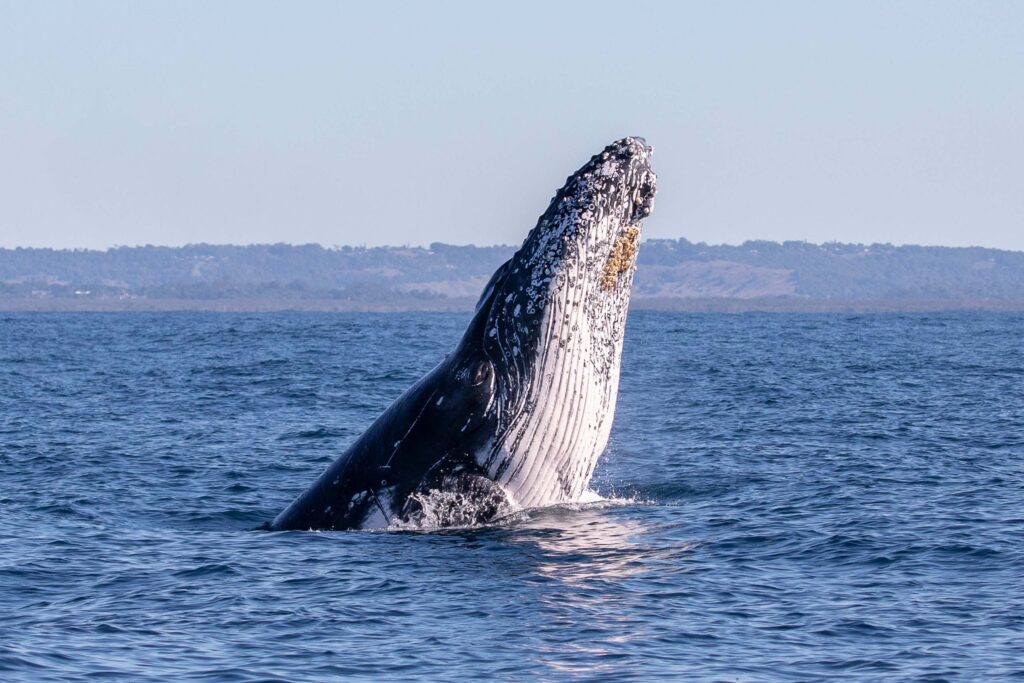
Head Slapping
The whale raises its head clear of the water and slaps it on the water surface.
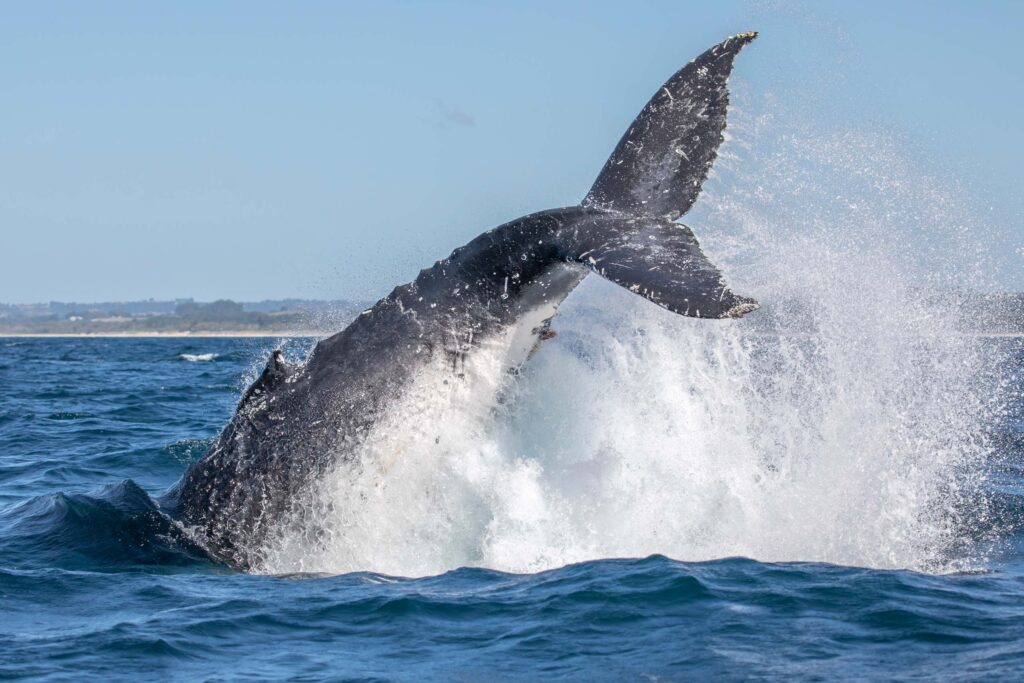
Peduncle Throw
One of the most powerful and aggressive behaviour. This is when the whale throws the lower portion of its body, including its flukes sideways across the surface of the water.
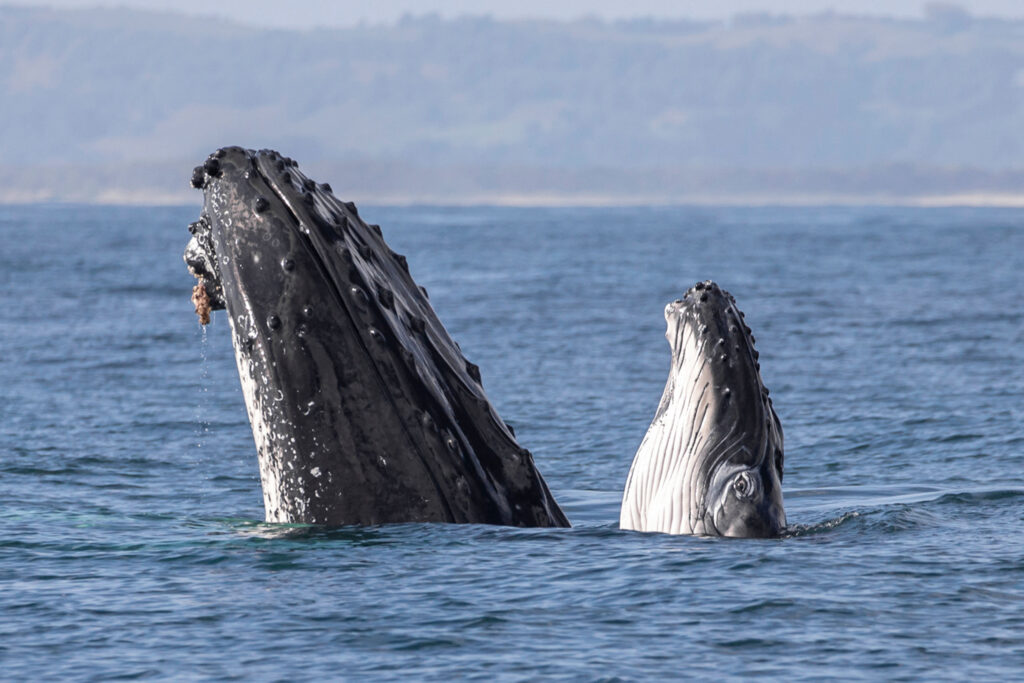
Spy Hop
Inquisitive behaviour when the whale raise its head above the water to take a closer look at something, usually a whale watching boat! Who is watching who?
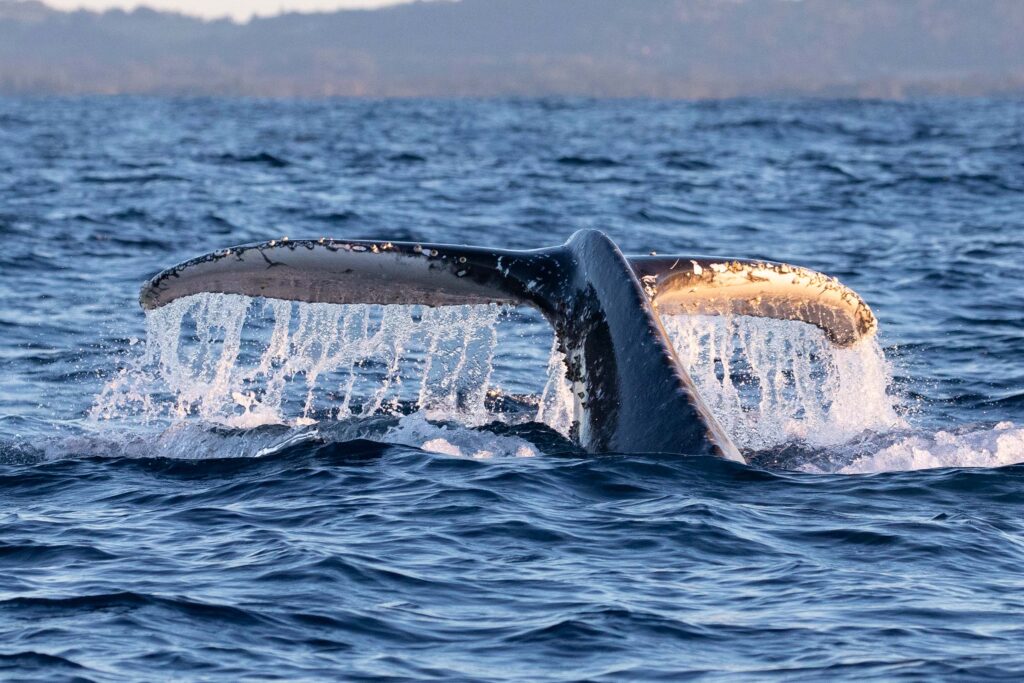
Fluke dive
The whale lifts its fluke (or tail) out of the water before diving, in order to descend steeply beneath the surface
The Humpback Whale Song
The song of the humpback whale is a loud, complex series of sounds repeated over and over.
All whales within a given area and season seem to use the same songs. However, the songs appear to change from one breeding season to the next.
Researchers estimate that some of the lowest frequency sounds can travel through the ocean as far as 10,000 miles (or 16,093km).
Come aboard our whale watching excursions and listen to their song for yourself via our underwater hydrophone. It truly has to be heard to be believed!
